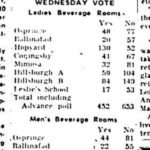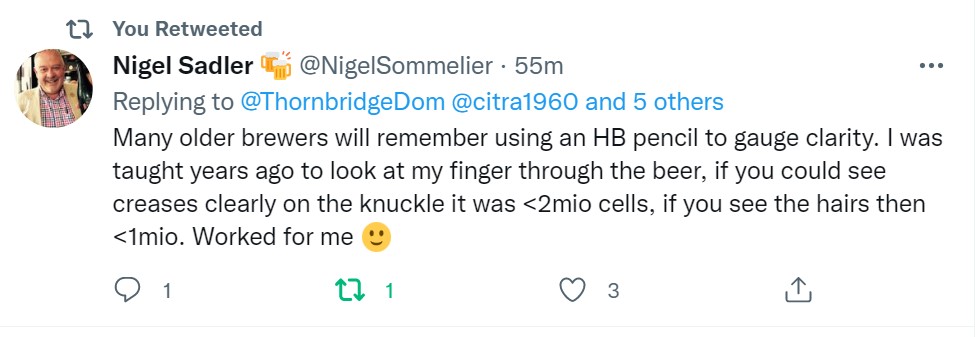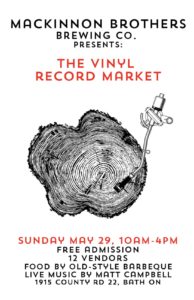 As you all know all too well, I taught English to rude high school kids and bored adult evening classes in Poland in 1991. So sweater always strikes me as a word that should raise and eyebrow or two:
As you all know all too well, I taught English to rude high school kids and bored adult evening classes in Poland in 1991. So sweater always strikes me as a word that should raise and eyebrow or two:
Student: “You wear that just to sweat in it!?!?” Teacher: “No, it’s for when it’s cold.” Student: “So… you don’t have something to wear when you sweat?” Teacher: “Well, there is a sweatshirt, sure.” Student: “Wait, a sweater and a sweatshirt and different things?” Teacher: “Yes – but a sweatshirt is not a shirt.” Student: “WHAAAAT??”
(Next class… you have to explain what a “bunny hug” is.) I was thinking of sweaters, sweatshirts and bunny hugs as I did crofter cos-play all weekend out in the yard. I should feel guilty for wishing away the warmth as I dig, haul, dig, haul, get lightheaded, sit, get up, dig, haul… repeat… daydream of sweater weather… have a cold beer… plan putting the garden to bed for winter… shorter nights… and sooner or later nap. And to dream of sweater weather. Cooler weather. OK, maybe not that cold.
Good to have dreams.  Many are living theirs at the Great British Beer Festival. Not Matthew sadly – but many others. Lots of happy faces at the hashtag even if Des de Moor can’t find enough mild. Ruvani held court. And Ed posted this excellent cheat sheet clearly created in some sort of trade feedback meeting setting. SWOT. About cask ale. See? I can read the big letters up top. It’s interesting in a direct sense but also in an indirect one.* It’s an interesting sign of hope that something can be worked out. Best line. “Lost Expertise From Staff Leaving” under threats. And the worst? “Learn From Craft.” Don’t be doing that sort of thing.
Many are living theirs at the Great British Beer Festival. Not Matthew sadly – but many others. Lots of happy faces at the hashtag even if Des de Moor can’t find enough mild. Ruvani held court. And Ed posted this excellent cheat sheet clearly created in some sort of trade feedback meeting setting. SWOT. About cask ale. See? I can read the big letters up top. It’s interesting in a direct sense but also in an indirect one.* It’s an interesting sign of hope that something can be worked out. Best line. “Lost Expertise From Staff Leaving” under threats. And the worst? “Learn From Craft.” Don’t be doing that sort of thing.
Speaking of doing, Ontario small rural brewer John Graham of Church-Key Brewing in Campbellford continues to volunteer as a driver of goods and people in and out of Ukraine. I am absolutely struck by his dedication to humanity and the effort he is putting in towards that end. Here’s a video from Monday of what he doing. What’s he doing? Doing good.
What else went on this week? The Morning Advertiser in the UK published** a very messy argument in favour of ramming the square peg of today’s range of beers into the round hole of the reasonably now long departed concept of “craft” referencing such terms as “real craft” “craft-washing” “craft-style beer” “craft-influenced beer” and “in the style of craft” for fear that otherwise “the craft beer scene will be watered down”! I am not sure if I missed the time loop portal but that argument is about a decade too late. Stop digging up the empty grave! It’s all about fruit sauce, adjuncts and scale these days. And money. And, by the way, who would have predicted back in 2005 that the much maligned too sweet and reasonably sour and slightly funky dud known as Chapeau Exotic would have ended up as the archetype for craft beer in 2022?
And there may not be enough money going around these days, according to Heineken:
The company recorded 24.6% organic growth in operating profit, while it generated sales of €16.4 billion, a rise of 22.4% on an organic basis. However, Heineken said that while consumer demand has been resilient in the first half, “there is an increasing risk that mounting pressure on consumer purchasing power will affect beer consumption”.
But while Molson Coors is forecasting a similar low coming in from the horizon they have taken that possibility into account:
A year ago, Molson Coors began trimming its portfolio of lower-priced beers to focus on more other options. Some investors wanted the company to ditch the segment altogether and instead focus entirely on more expensive beers, which have performed better in recent years. “What some would regard as an Achilles heel, in the past, has positioned us perfectly at the moment,” Hattersley said. “Some of our competitors only operate in the premium space, which is obviously not a place I’d like to be as we’re heading into what’s clearly going to be tough times.”
Always interesting to see beer businesses seeking to be where the beer buying public is going to be. People can’t buy what they can’t afford.
Note: Canada waaaaay over invested in pot. 425 million unsold tons destroyed in 2021.
Breeze Galindo is the focus of this month’s edition of Beth Demmon’s Probibitchin’. She’s a west coast turned east coast brewer who is also involved with the Michael James Jackson Foundation for Brewing & Distilling:
“Garrett had never heard of me at all,” Breeze laughs. That changed when an acquaintance on the West Coast reached out to Oliver to recommend her as an MJF Board member. (Note: boost! your! friends!) With Other Half’s blessing — and a glowing reference — the position was hers by October 2020. Now with the Foundation’s resources, Breeze hopes to take it to the next level by chairing a brand-new mentorship program, slated to formally launch this fall.
Jess of Boak and Bailey published an excellent piece on a disappearing aspect of pub architecture – the function room that served as the location of many of life’s milestones in the past:
You’re dealing with customers who are struggling emotionally and can’t or don’t want to have boring conversations about logistics. Undertakers are trained to deal with this; publicans not so much. And they can’t be sure about how many people are going to turn up – “No, we’re surprised too, we didn’t think he had any friends!” – and so fixing a price that works for both parties is a challenge. Because of a general trend towards hosting weddings in posher places (country hotels, stately homes, the Maldives) it’s also harder to justify holding a room that only does any business when someone dies.
 Long time pal of this here blog and fellow Scot abroad Alistair Reese of Fuggled fame has had a very interesting article published in Pellicle this week on the rise of Murphy & Rude Malting Co in Charlottesville, Virginia:
Long time pal of this here blog and fellow Scot abroad Alistair Reese of Fuggled fame has had a very interesting article published in Pellicle this week on the rise of Murphy & Rude Malting Co in Charlottesville, Virginia:
Sitting by the open roll door of an industrial unit in the historic Woolen Mills district of Charlottesville, Jeff, owner and maltster at Murphy & Rude Malting Company tells me how he started learning about craft beer’s supply chain as a result of the new law. Jeff had assumed that in a state in which agriculture plays such a significant role in the economy there would be several malting companies already in-state ready to work with the coming tsunami of new brewers. What he discovered shocked him, there was not a single malt house in the entire state.
Note: the image next to the story above is not related to the story above but I liked it so much when I saw it this week at a store in town that I added it anyway. Sorta ag, though, right? Rude ag. What would the children think it meant? Rude. Ag rude.
And finally in sadly negative news,*** a small brewer in Canada’s tiniest province received a whack of play hate cowards this week when it posted images of the Prime Minister’s visit.
“So within a few hours, we had thousands of comments, we were getting hundreds of private messages, we are now getting phone calls to the brewery and all of these comments are extremely negative, vulgar, there is a lot of profanity being used, sexualizing our staff,” Murphy said in an interview outside the pub.
Nutso.
So there you are. Have fun. But not too much fun. You know what I mean. While you exercise moderation, check out the updates from Boak and Bailey mostly every Saturday but not from Stan every Monday as he is on his summer holiday. Check out the weekly Beer Ladies Podcast, and at the mostly weekly OCBG Podcast on Tuesdays or Wednesdays and sometimes on a Friday posts at The Fizz as well. And the long standing Beervana podcast (Ed.: which I have missed from this list for some unknown reason.) There is a monthly sort of round up at The Glass. (Ed.: that seems to be dead now… nope, there was a post on July 25th… 2022 even.) There is more from DaftAboutCraft‘s podcast, too. And the Beervana podcast. And sign up for Katie’s (Ed.: now very) irregular newsletter, The Gulp, too. And check out the Atlantic Canada Beer Blog‘s weekly roundup. Still gearing up, the recently revived All About Beer has introduced a podcast, too. (Ed.: give it a few weeks to settle in and not be as agreeable.) Plus follow the venerable Full Pint podcast. And Fermentation Radio with Emma Inch. The AfroBeerChick podcast as well! And also look at Brewsround and Cabin Fever. And Ben has his own podcast, Beer and Badword (Ed.: …notice of revival of which has been given… still not on the radio dial…) And remember BeerEdge, too, and The Moon Under Water. There has also been the Beer O’clock Show but that’s now winding up after ten years.
*No, I don’t know what I meant either.
**Word spread through a Mudge-Alert!
***Finally more unnecessary neg – or perhaps just this week’s clangers – conveniently all lumped together down here for easy and brief reading. Or ignoring. First, we have a complaints department update… I am not sure which complaint is worse: the beer, the scoring, the basis for the scoring or caring about the first three. And perhaps relatedly, there was a sighting of the denialists oath this week – craft beer working conditions are apparently A-OK… so stop your complaining… as if that makes a difference. And, sticking with the theme of wasnotwas, the style experts have now determined (in a bit of a bizarre twist) that style is not a construct so much as a result… meaning any trending branding label can go on any old thing. Takes experts to tell you that there sort of thing… or not thing… beware! Beware too those who think appreciating this all stuff requires professional expert guidance! This too!! The fruits of these scholars are a glory to behold. Also really beware of the long thread that makes something pretty simple look reeeealllly hard – you can usually spot one of these by first going right to the end to see what the point is. In this case, trying to sell you consultancy services! It’s a frikkin’ dog and pony show! Because there is no way anyone in the trade could figure out the tap configuration of their bar. PS and finally… it’s like there’s a few sentences missing, with all due respect, as doesn’t this only make sense if books, beers of the world bars, pencils and note books, trade gatherings of any sort, telephones, word of mouth and you know humans talking to humans did not exist prior to 1990?


















